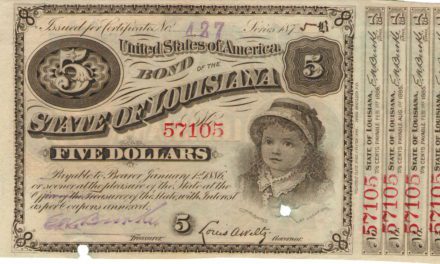Banks and Financial Institutions are Filing Record Numbers of Suspicious Activity Reports
So, what are Suspicious Activity Reports? Why are they filed? And what can you do to avoid having one filed against you?
If a bank suspects that one of its clients is engaged in money laundering, it’s required to report this suspicion to the relevant authorities. This is known as suspicious activity reporting (SAR).
In the United States, banks are required to file a SAR with the Financial Crimes Enforcement Network (FinCEN) if they suspect that a client is engaging in money laundering or other financial crimes. In other countries, banks may be required to file a SAR with a different regulatory agency or with the police.
When filing a SAR, the bank is required to provide detailed information about the suspicious activity. This includes the identity of the client and the nature of the suspected money laundering activity. The bank is also required to provide any additional information that may be relevant to the investigation. This can include details of the client’s financial transactions and the source of their funds.
It’s important to note that banks are required to file a SAR even if they do not have definitive proof that a client is engaging in money laundering. The purpose of SARs is to alert authorities to potential money laundering activity and to provide them with the information they need to start an investigation.
Banks file Suspicious Activity Reports even if there’s the slightest hint of suspicious activity on an account. This is to protect themselves from reputational and financial risks.
Suspicious Activity Reports Have More Than Tripled in the last 10 Years
Here is a table showing the number of suspicious activity reports (SARs) filed with financial regulatory agencies in the United States, United Kingdom, and Australia between 2010 and 2020:
| Year | Number of SARs filed in the US | Number of SARs filed in the UK | Number of SARs filed in Australia |
| 2010 | 699,492 | 222,116 | 96,393 |
| 2011 | 806,086 | 232,741 | 102,830 |
| 2012 | 809,639 | 236,864 | 111,084 |
| 2013 | 864,416 | 246,425 | 121,979 |
| 2014 | 947,045 | 270,745 | 131,198 |
| 2015 | 1,036,937 | 277,281 | 137,118 |
| 2016 | 1,109,362 | 281,862 | 152,711 |
| 2017 | 1,362,046 | 314,871 | 161,717 |
| 2018 | 1,573,057 | 327,971 | 187,746 |
| 2019 | 1,717,600 | 341,813 | 217,724 |
| 2020 | 2,109,730 | 506,620 | 330,601 |
As the table shows, the number of SARs filed with financial regulatory agencies in the United States, United Kingdom, and Australia has increased significantly in recent years. This increase may be due to a variety of factors, including an increase in financial crime and an improvement in the effectiveness of financial institutions’ compliance programs.
What are Suspicious Activity Reports and How did They Start?
The origins of money laundering regulations can be traced back to the 1970s, when the United States enacted the Bank Secrecy Act (BSA). This was an effort to combat money laundering and other financial crimes. The Bank Secrecy Act required financial institutions to report large cash transactions and other suspicious activity to the government. It established the Financial Crimes Enforcement Network (FinCEN) to help implement and enforce these requirements.
Since the implementation of the Bank Secrecy Act, money laundering regulations have become increasingly widespread. Almost all countries now having laws in place to combat these activities. The passage of the USA PATRIOT Act in 2001, which was enacted in response to the September 11th attacks, further strengthened anti-money laundering (AML) and know your customer (KYC) requirements in the United States and around the world.
Today, AML and KYC regulations are an important part of the global financial system, with financial institutions required to implement robust policies and procedures to prevent and detect money laundering and terrorist financing.
Penalties for Banks and Financial Institutions
The penalties for banks that fail to file suspicious activity reports (SARs) when required can vary depending on the country in which the bank is located and the specific laws and regulations that apply. Banks that fail to file SARs when required may face significant fines and other penalties.
In the United States, for example, financial institutions that fail to file SARs when required may be subject to civil and criminal penalties, including fines, imprisonment, and other sanctions. The Financial Crimes Enforcement Network (FinCEN), which is responsible for enforcing SAR filing requirements in the United States, has the authority to impose significant fines on financial institutions that fail to file SARs when required. In addition, financial institutions that fail to file SARs may be subject to enforcement action by other regulatory agencies, such as the Consumer Financial Protection Bureau (CFPB) or the Office of the Comptroller of the Currency (OCC).
In the United Kingdom, financial institutions that fail to file SARs when required may be subject to fines and other penalties imposed by the Financial Conduct Authority (FCA), which is responsible for enforcing Suspicious Activity Report filing requirements in the country. In addition, financial institutions that fail to file SARs may be subject to other regulatory action, such as enforcement proceedings or the suspension or revocation of their operating license.
In Australia, financial institutions that fail to file SARs when required may be subject to fines and other penalties imposed by the Australian Transaction Reports and Analysis Centre (AUSTRAC), which is responsible for enforcing SAR filing requirements in the country.
What Types of Transactions are Considered Suspicious and Likely to be Reported?
When we consider the question of what are suspicious activity reports we must consider the type of transactions that are likely to be reported.
There are many types of transactions that may be considered suspicious under anti-money laundering (AML) and know your customer (KYC) rules. Here are ten examples:
- Large or frequent cash transactions: Large or frequent cash transactions may be viewed as suspicious, as they may be indicative of money laundering or other illicit activities.
- Transactions with no apparent economic purpose: Transactions that appear to have no legitimate economic purpose may be viewed as suspicious.
- Transactions with shell companies: Transactions with shell companies, which are often used to obscure the true identities of those involved, may be viewed as suspicious.
- Transactions with high-risk countries: Transactions with countries that are known to be high-risk for money laundering or terrorist financing may be viewed as suspicious.
- Transactions involving politically exposed persons: Transactions involving politically exposed persons (PEPs), who are at higher risk for corruption, may be viewed as suspicious.
- Transactions involving unusual structures or intermediaries: Transactions that involve complex or unusual structures, or the use of intermediaries, may be viewed as suspicious.
- Transactions involving anonymous or untraceable sources of funds: Transactions involving anonymous or untraceable sources of funds may be viewed as suspicious.
- Transactions involving a sudden change in business activity: A sudden change in business activity, such as a significant increase or decrease in the volume of transactions, may be viewed as suspicious.
- Transactions involving a sudden change in the nature of business: A sudden change in the nature of a business, such as a switch from a low-risk to a high-risk industry, may be viewed as suspicious.
- Transactions involving the misuse of professional services: The misuse of professional services, such as legal or accounting services, to facilitate money laundering or other illicit activities may be viewed as suspicious.
These are just a few examples of transactions that may be viewed as suspicious under AML and KYC rules, and financial institutions may also consider other factors when evaluating the risk of money laundering or terrorist financing.
Conclusion
Financial privacy has been abolished in most countries. When you entrust your money to a bank or financial institution it’s important that you don’t become the subject of a Suspicious Activity Report. The consequences of a SAR being filed against you could be the closure of your bank accounts with the institution who filed the SAR. It could also result in your bank accounts being frozen with no notice. That’s why its important not to put all your eggs in one basket. You should be anti-fragile in your financial life and have your bank accounts and other assets spread across multiple jurisdictions. The risks have never been greater for those with assets.
What are Suspicious Activity Reports – Open Offshore Bank Accounts











